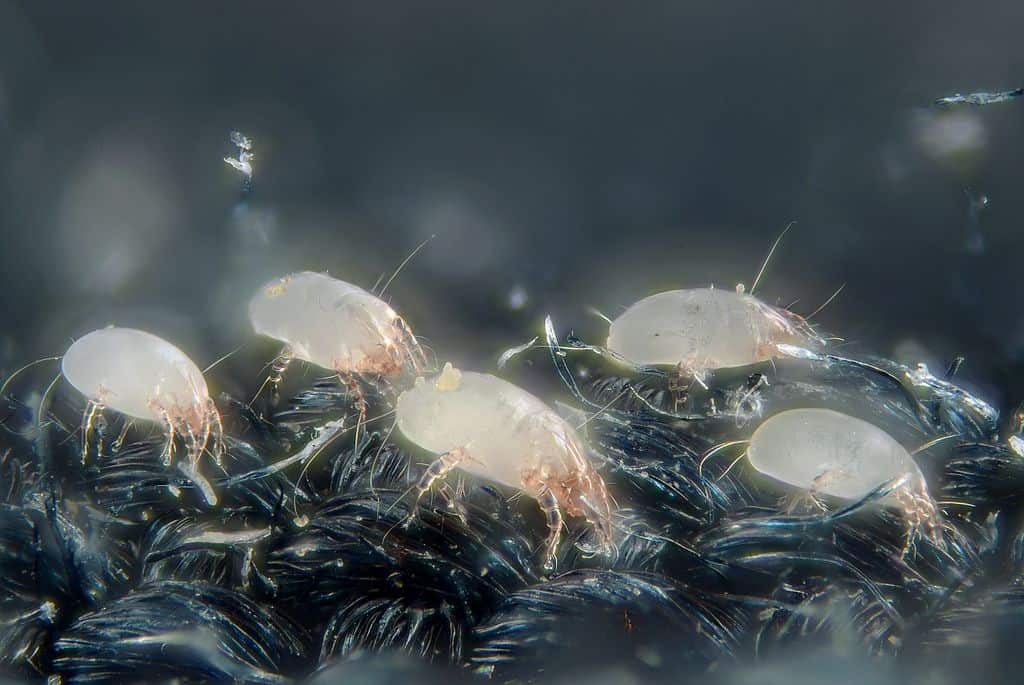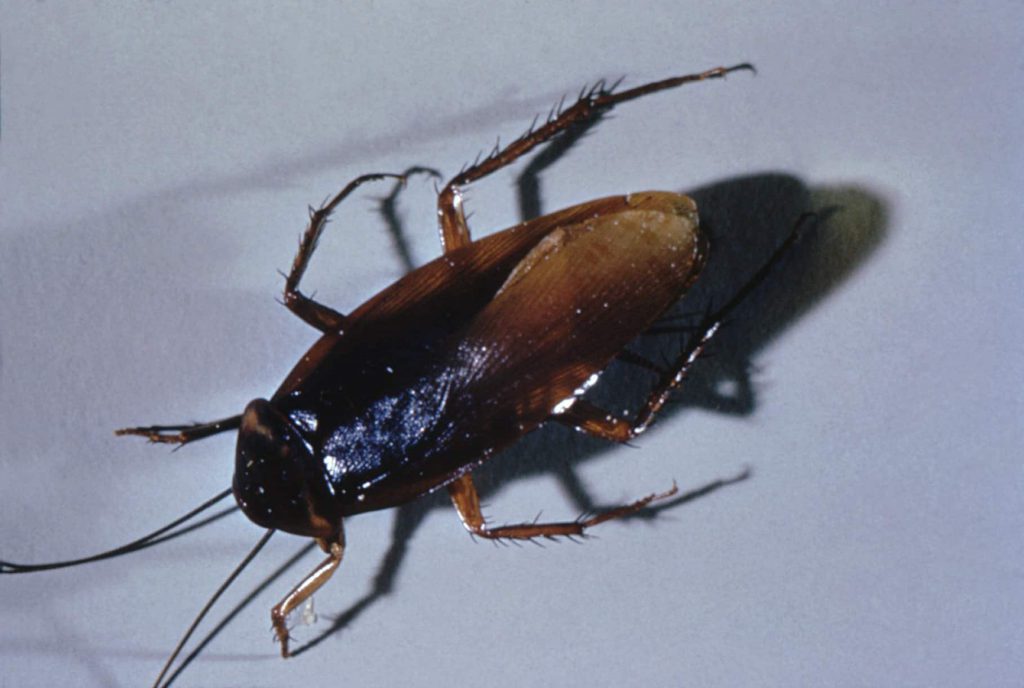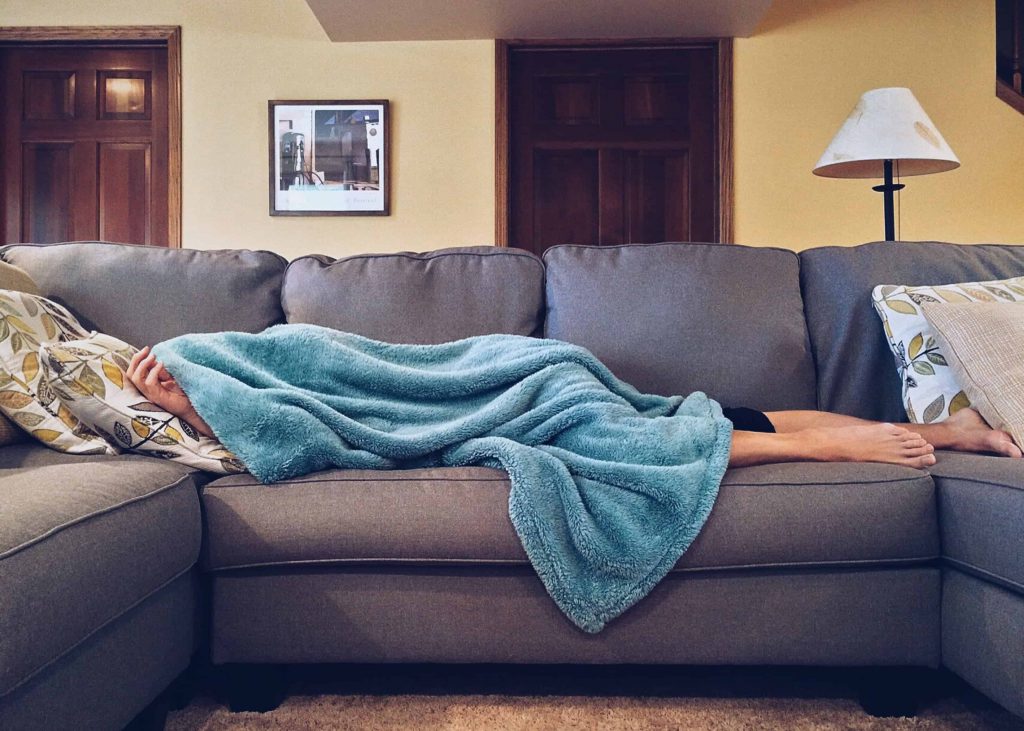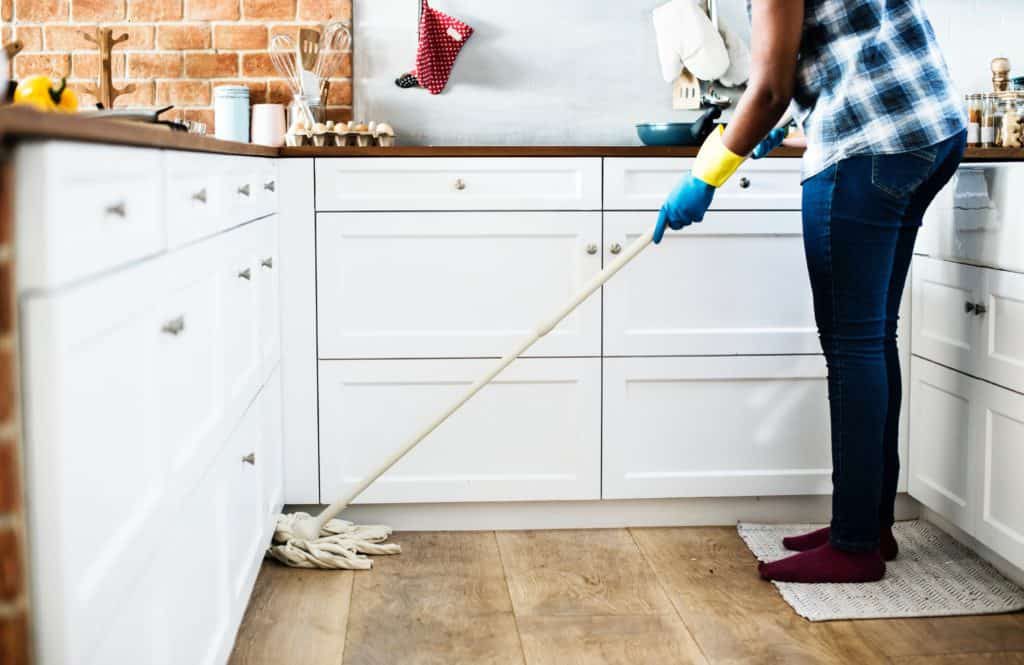What Could You be Allergic to in Your House?
Dust Mites
Dust mites are microscopic insects that feed off human skin flakes. They are among the most common in-home allergens. These tiny bugs thrive in warm, moist environments, which means bedding and soft furniture are often filled with these invisible pests. Although they don’t bite, they can inflame the nasal passages, leading to itchy, watery eyes and nasal congestion.
Mold
Mold is another common household allergen because it tends to grow in damp, dark places like basements, behind drywall, and in small, poorly-ventilated bathrooms. Like dust mites, mold can cause respiratory problems along with dry, itchy skin. Some types of mold, like black mold, are more toxic than others.
Pollen
Indoor pollen data levels can also be higher than you might think, particularly if your family tends to enjoy the outdoors during the spring and summertime, as all that outdoor pollen is easily tracked indoors. Pets can also carry pollen inside, which is why some people mistakenly think they are allergic to dogs when it’s actually the ragweed or another irritant that’s hitching a ride with Fido.
Cockroaches
Homes in southern areas may harbor cockroaches that secrete allergens in their saliva and feces. It’s a common myth that the chemicals used to eradicate cockroaches cause allergic reactions, when in fact the bugs themselves are the culprits.
Pet Allergies
If your household includes four-legged members, you may be exposed to more allergen triggers than you think. Cats and dogs shed invisible dust and dander particles that can become airborne and travel throughout your home with ease. Even the protein in animal saliva, urine, and feces can cause an allergic reaction in some people.Some places in the nation are more challenging to inhabit than others for those who suffer from allergies. The Asthma and Allergy Foundation of America (AAFA) calls these cities “allergy capitals.” Springfield, MA, Louisville, KY, and Richmond, VA made the list in both 2019 and 2018. If you live in an allergy capital, you’ll want to take extra measures to protect yourself from pollen, like keeping your windows closed and washing your bedding weekly.

Indoor Allergy & Asthma Symptoms
Indoor allergens trigger the same reactions that you can expect from outdoor irritants, with one major exception — allergens in your home can cause year-round allergy symptoms that are normally associated with hay fever or seasonal, allergy-induced asthma.Symptoms of Allergic Reactions to Allergens at Home Include:
- Sneezing
- Watery eyes
- Itchy skin
- Nasal congestion
- Difficulty breathing
- Allergic rhinitis, or hay fever
- An overall feeling of malaise
Where are Allergens Found in the Home?
Bedroom
Home allergens tend to be concentrated in the areas where we spend the most time. Given that we spend an average of 7 to 9 hours in bed each night and bedrooms are filled with soft surfaces where dust mites, pollen, and pet dander accumulate, bedrooms tend to be the top allergen hotspot in many homes.
Basement
Basements are also known to harbor mold, irritants, and dust, particularly in climates that are prone to dampness and flooding, like the Pacific Northwest.Living Room
The living room can be another allergen hotspot, especially if there is carpeting and soft window treatments that cause particles to accumulate, leading to almost uncontrollable dust in the house.Bathroom
While bathrooms usually don’t have many soft surfaces, high humidity levels from showers and baths, poorly-sealed tiles, and a lack of ventilation can create the ideal breeding ground for mold.How to Get Rid of Allergens in Your Home
Remove Carpets and Rugs Wherever Possible
Carpets can help keep your floors warm and comfortable, but they tend to exacerbate allergies. They can trap irritants like pet dander and dust only to re-release them again every time someone walks on the carpet. Worse yet, it’s virtually impossible to vacuum up particles that become trapped in the carpet underlay.
Invest in Zip-On Dust Mite Covers for Pillows and Mattresses
Since you can’t wash your mattress, the next-best thing is to encase it in a specially-designed, dust mite-proof mattress cover. These washable covers are also available for your pillows to prevent build-up and make it easy to allergy-proof your bedroom.Install Washable Window Covers
Replace heavy, thick curtains with ones that you can remove and clean regularly, and install wipeable roller blinds in place of those hard-to-clean mini blinds.Vacuum Regularly
Use a strong, high-quality vacuum to clean any remaining carpets and soft surfaces like sofas and chairs, and remember to clean the dust off from behind electronics like your television, speakers, and fridge.Use Unscented Cleaning Products
Strong scents are a common irritant, so be sure to choose only unscented cleaning products and avoid the use of artificial air fresheners that can trigger breathing problems among people who suffer from asthma. Natural fabric sprays can also help remove allergens from the couch and furniture.
Keep your Furnace Filter Clean
Purchase a high-quality air filter for your HVAC system and remember to change it out regularly (usually every two months) in order to cut down on the allergens that are re-circulated throughout your heating and cooling vents.Use a Dehumidifier
A dehumidifier is a small machine that removes excess moisture from the air, making it difficult for mold and mildew to grow. It can also keep dust mites at bay, since these creatures thrive in damp environments. Be sure to talk to your doctor if you’ve experienced sinus issues, as the dry air can actually exacerbate some sinus problems.Hire Pest Control
There are several DIY ways to get rid of cockroaches, and some are even all-natural, like diatomaceous earth, essential oils, or over-the-counter solutions. However, the effectiveness of these home remedies is debatable, and some may even trigger or worsen allergies. The best way to deal with a cockroach infestation is through a professional pest control company.Consult a Home Inspector
Some mold, like mildew, lives on damp surfaces and is relatively easy to clean with a 1-to-8 bleach/water solution. Other types are more insidious and can live in drywall, carpet, insulation, or other hard-to-reach places. This type of fungus takes elbow grease to remove and depending on the severity of your allergy, it may not be a good idea for you to be in close proximity. An experienced home inspector can check your house for signs of mold and other allergens and make a recommendation on how to proceed.Get Tested for Indoor Allergies
If you or your loved ones suspect in-home allergens could be a problem in your house, speak with your doctor about allergy testing. The most common is a “skin prick” test that involves exposing a small patch of skin to several allergens in order to confirm or rule them out as triggers. An allergy test is typically administered by an allergy specialist, or allergist, who treats allergies, asthma, and other immune system-related issues. While it’s impossible to get rid of allergens entirely, you can control their impact at home. Once you’ve identified your triggers and learned where the allergen hotspots are in your home, you can act accordingly to stop the spread of dust, dander, pollen, mites, and other unwelcome guests. By taking these steps, you will ultimately create a home environment that is healthier and more comfortable for you and your family.Do you have indoor allergies? What has worked for you to reduce allergens in your home? Share with us on our social media page or if you are troubled by it visit shop.getambee.com to purchase your own air personal allergy and quality monitor Blog originally published on https://www.redfin.com/blog/allergy-proof-home/
Jennifer enjoys writing about the intersection of real estate and technology. Her dream home would be a mid-century modern desert oasis with a pool for lounging




